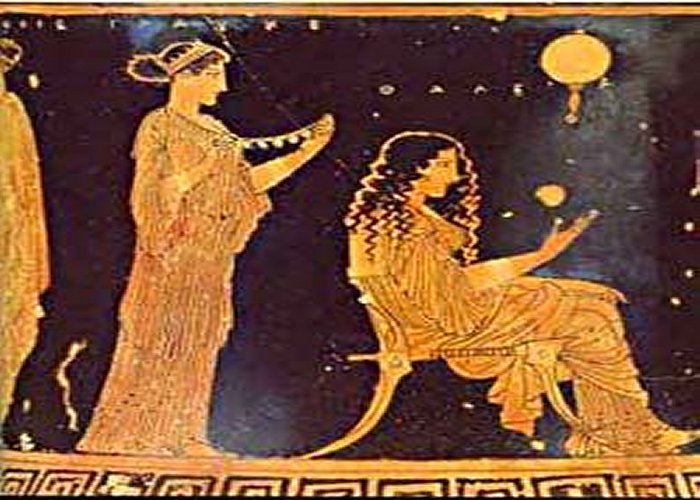Aglaonice (Aganice): Female Greek Astronomer From Thessaly Was Believed To Be A Witch
A. Sutherland - AncientPages.com - In ancient sources, Aglaonice (also Aganice) is mentioned as the first Greek female astronomer of the 2nd or 1st century BC and natural philosopher.
Very little is known about her, but it is confirmed that she gained fame because of her ability to predict lunar eclipses, probably, through observations.
According to Plutarch, Aglaonice made attempts to predict future events by the aid of celestial globes, and by the study of the constellations. Image source
The young woman was a Thessalian stargazer, intensely fascinated with the sky. Aglaonice’ s astronomical knowledge most probably dated back to early Egyptian and Babylonian times, when the stargazing, actively performed in both Egypt and the plains of Chaldea contributed with significant discoveries regarding the laws and movements of celestial bodies.
According to Plutarch (46–after 119 AD), she made attempts to predict future events by the aid of celestial globes, and by the study of the constellations. If so, Aglaonice was somewhat more competent in astrology rather than astronomy as we know it today.
Aglaonice was considered to be Greek and the daughter of king Hegetoris of Thessaly, an isolated region in the vicinity of the Olympus Mountain.
She was contemporary of Eratosthenes of Cyrene (276 BC – c. 195/194 BC) best known for being the first person to calculate the circumference of the Earth. She learned the regularities of the eclipse cycle, but for contemporary people who feared the unknown, such skills attested to the woman’s supernatural abilities.
However, the ability to forecast a lunar eclipse would be possible for anyone who was familiar with the periods of the full moon and the cycles of eclipses (the so-called ‘Metonic cycle’).
Babylonian astronomers were able to predict lunar eclipses and - later – accurate solar eclipses. Their tool was the Saros-cycle - a period of precisely 18 years and 11.3 days after which lunar and solar eclipses repeat themselves. This cycle was also known to Aglaonice.
She is mentioned in the writings of Plutarch, and Apollonius of Rhodes Rhodes (third century BC) as a female astronomer and the daughter of Hegetor (or Hegemon) of Thessaly.
Female Astronomer Was Believed To Be A Witch
She lived among the people who regarded her as a sorceress for her ability to make the moon disappear from the sky, but she ignored them all.
Ancient people did not understand how she could know the time and general area where a lunar eclipse would take place. Several young women who were believed to be sorcerers were associated with Aglaonice. They were known as the "witches of Thessaly" and were also active from the 3rd to 1st centuries BC.
See also:
Paracelsus: Physician, Alchemist, Philosopher Well Ahead Of His Time
Socrates: Great Philosopher And Brave Man Who Still Inspires Many People
Plutarch (46 Ad – 119 AD), Greek biographer and essayist, said once that she possessed knowledge of astronomy and astronomical computation. She was also familiar with the periods of the Full Moon and was able to foretell the exact time and place of lunar eclipses.
Plutarch was not among those who were impressed with Aglaonike’s astronomical skills. She was a dangerous woman because she could persuade other Thessalian women about her unique abilities.
According to him, she was a “witch” who intentionally wanted to deceive women around her because they had no astronomical training. A similar opinion about Aglaonike also had Plato (Gorgias 513), Horace (Epodes 5.45), and Virgil (Eclogues 8.69) and they all called the women of Thessaly - “Thessalian enchantresses,” equipped with magic powers, and with them, these witches were able to manipulate the moon and the sun, and make them disappear.
According to Sosiphanes, tragic poet of the 4th century BC, “every Thessalian maiden with magic songs [is] a false bringer-down of the moon from the sky…”
The ‘procedure’ was called the ‘Thessalian Trick.’
Written by - A. Sutherland - AncientPages.com Senior Staff Writer
Copyright © AncientPages.com All rights reserved. This material may not be published, broadcast, rewritten or redistributed in whole or part without the express written permission of AncientPages.com
Expand for referencesReferences:
Thorburn John E. The Facts on File Companion to Classical Drama
Eileen M. Byrne, Women In Science
Stories of Women Stargazers
http://buhlplanetarium2.tripod.com/bio/heveliuse/Stories_of_Women_Stargazers.pdf
More From Ancient Pages
-
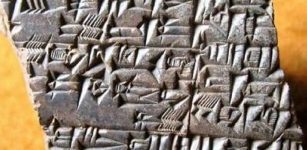 Sumerian Clay Brick With Inscription In Honor Of God Enki Returns To Iraq
Archaeology | May 5, 2015
Sumerian Clay Brick With Inscription In Honor Of God Enki Returns To Iraq
Archaeology | May 5, 2015 -
 Masroor Temples – India’s Marvelous Ancient Cave Temples
Featured Stories | Jan 23, 2016
Masroor Temples – India’s Marvelous Ancient Cave Temples
Featured Stories | Jan 23, 2016 -
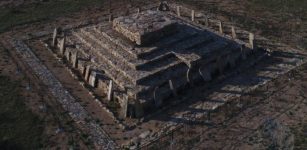 Intriguing 3,400-Year-Old Multipurpose Pyramid Found In Kazakhstan
Archaeology | Nov 2, 2023
Intriguing 3,400-Year-Old Multipurpose Pyramid Found In Kazakhstan
Archaeology | Nov 2, 2023 -
 What Was It Like To Be A Student In The Middle Ages?
Ancient History Facts | Jun 6, 2019
What Was It Like To Be A Student In The Middle Ages?
Ancient History Facts | Jun 6, 2019 -
 Chromium Steel Was First Produced In Ancient Persia
Ancient Technology | Sep 24, 2020
Chromium Steel Was First Produced In Ancient Persia
Ancient Technology | Sep 24, 2020 -
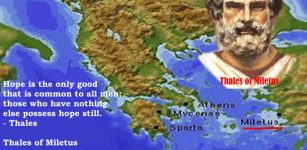 Thales Of Miletus: One Of The Famous “Seven Sages Of Greece” Who Predicted A Solar Eclipse
Featured Stories | Aug 12, 2016
Thales Of Miletus: One Of The Famous “Seven Sages Of Greece” Who Predicted A Solar Eclipse
Featured Stories | Aug 12, 2016 -
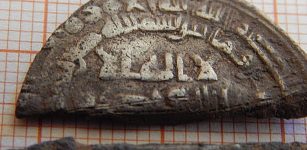 Treasure Trove Of Arabic Coins Dated Back 1,000 Years Unearthed In Graveyard In Poland
Archaeology | Jul 9, 2019
Treasure Trove Of Arabic Coins Dated Back 1,000 Years Unearthed In Graveyard In Poland
Archaeology | Jul 9, 2019 -
 This Ancient Roman Painting Survived Eruption Of Mount Vesuvius In 79 A.D.
Archaeology | Aug 21, 2017
This Ancient Roman Painting Survived Eruption Of Mount Vesuvius In 79 A.D.
Archaeology | Aug 21, 2017 -
 Mysterious Unknown Beings Who Walked The Earth With Humans
Featured Stories | Sep 15, 2020
Mysterious Unknown Beings Who Walked The Earth With Humans
Featured Stories | Sep 15, 2020 -
 Physical Violence In Ancient Mesopotamia Much Less Common Than Ancient Texts Suggest – New Study
Archaeology | Mar 29, 2017
Physical Violence In Ancient Mesopotamia Much Less Common Than Ancient Texts Suggest – New Study
Archaeology | Mar 29, 2017 -
 Denisovan Family Tree: New Branches Revealed In Ancient DNA
Archaeology | Apr 12, 2019
Denisovan Family Tree: New Branches Revealed In Ancient DNA
Archaeology | Apr 12, 2019 -
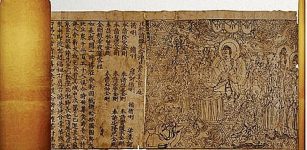 On This Day In History: ‘Diamond Sutra’ The Oldest Dated, Printed Book Is Published – On May 11, 868
News | May 11, 2016
On This Day In History: ‘Diamond Sutra’ The Oldest Dated, Printed Book Is Published – On May 11, 868
News | May 11, 2016 -
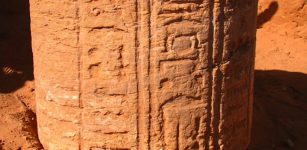 Abu Erteila’s Lost Temple And The Meroitic Empire: New Discoveries Shed Light On Nubian Civilization
Archaeology | Jan 14, 2016
Abu Erteila’s Lost Temple And The Meroitic Empire: New Discoveries Shed Light On Nubian Civilization
Archaeology | Jan 14, 2016 -
 Ancient DNA Reveals A Diverse Community Lived At Machu Picchu, The ‘Lost City Of The Incas’
Archaeology | Jul 26, 2023
Ancient DNA Reveals A Diverse Community Lived At Machu Picchu, The ‘Lost City Of The Incas’
Archaeology | Jul 26, 2023 -
 On This Day In History: Father Of Nation Mahatma Gandhi Was Born – On Oct 2, 1869
News | Oct 2, 2016
On This Day In History: Father Of Nation Mahatma Gandhi Was Born – On Oct 2, 1869
News | Oct 2, 2016 -
 Who Was The Mysterious Spitalfields Roman Noblewoman Dressed In Silk Found In A Sarcophagus In London?
Archaeology | Dec 21, 2020
Who Was The Mysterious Spitalfields Roman Noblewoman Dressed In Silk Found In A Sarcophagus In London?
Archaeology | Dec 21, 2020 -
 Wayland The Smith: Legendary Master Blacksmith And Lord Of The Elves
Featured Stories | Jul 14, 2016
Wayland The Smith: Legendary Master Blacksmith And Lord Of The Elves
Featured Stories | Jul 14, 2016 -
 A King’s Discovery Of A Mysterious Underground World
Featured Stories | Mar 30, 2024
A King’s Discovery Of A Mysterious Underground World
Featured Stories | Mar 30, 2024 -
 Amaru (Katari) – Powerful Inca God Who Controlled Weather Phenomena
Featured Stories | Apr 9, 2024
Amaru (Katari) – Powerful Inca God Who Controlled Weather Phenomena
Featured Stories | Apr 9, 2024 -
 On This Day In History: Hubble Space Telescope Was Launched – On April 24, 1990
News | Apr 24, 2016
On This Day In History: Hubble Space Telescope Was Launched – On April 24, 1990
News | Apr 24, 2016

